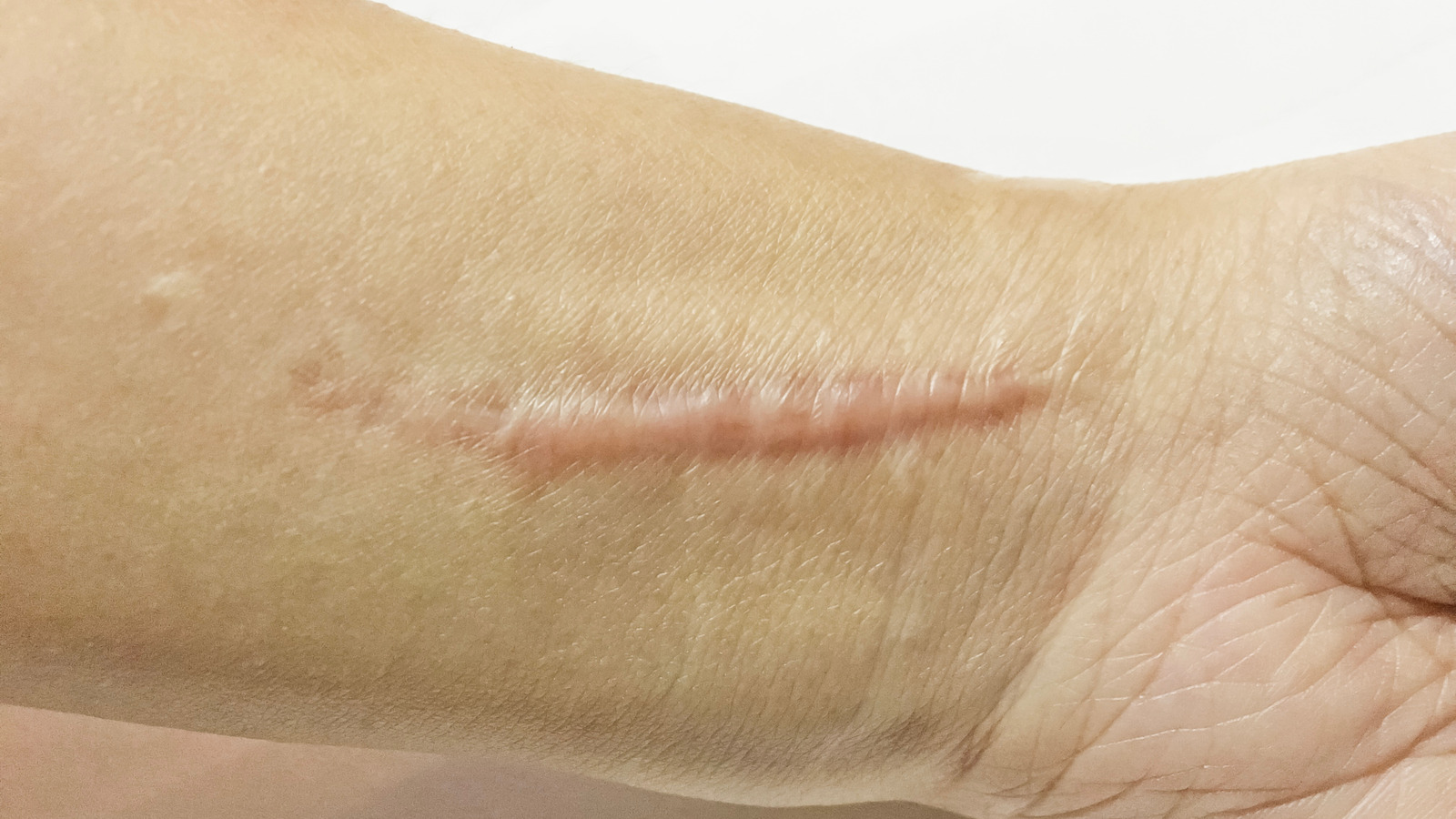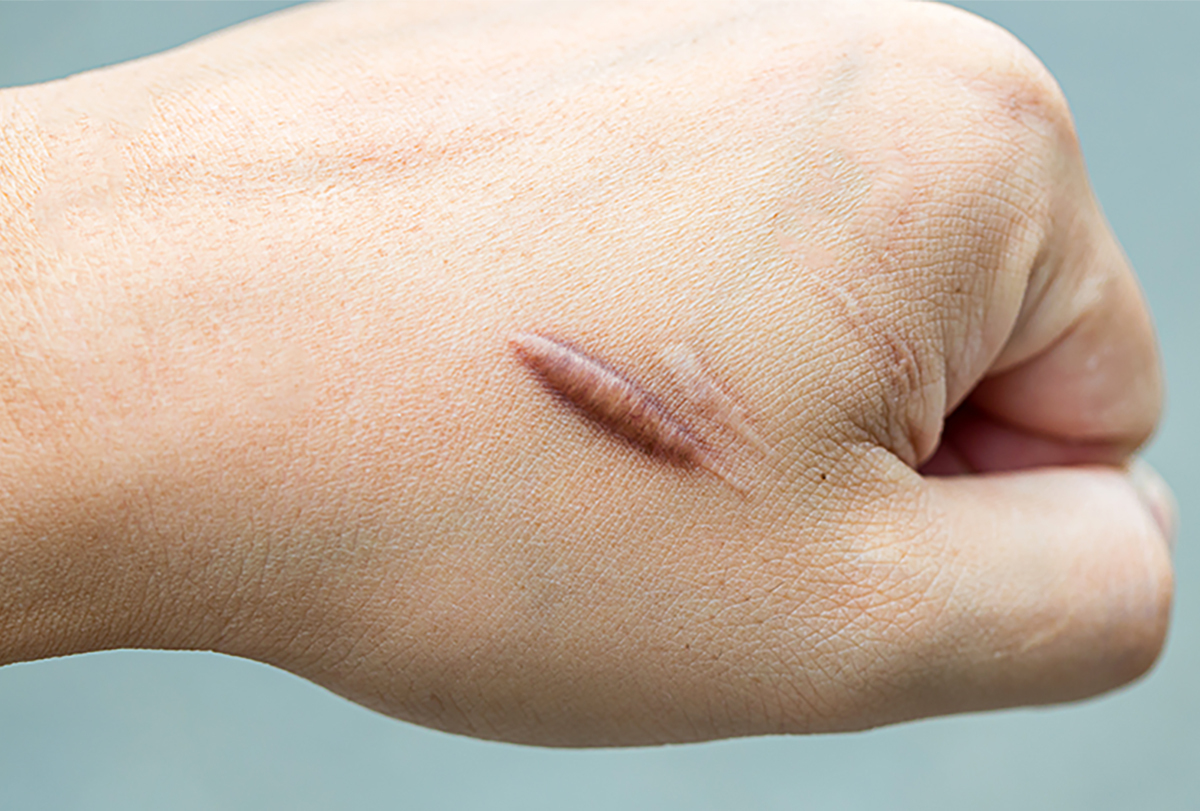Scarring is a process that occurs when fibrous tissue gets replaced by connective tissue, which can cause an excess of collagen to form and result in a keloid scar. Keloids are often seen on the ears, cheeks, chest, neck, back, and shoulders.
There are two types of keloid scars: hypertrophic large and atrophic small. Hypertrophic scars occur when the spot is over-inflated with too much collagen and other cells from the dermis layer of skin. Atrophic scars occur when insufficient collagen or elastin in the epidermis fills in for missing cells or scar tissue from an injury or burn.
Keloid scars have no definitive treatment, but many therapies have minimized the scarring process. As with most spots, time is the best treatment method. After a keloid scar has occurred, surgery can be done to remove excess tissue and reduce any visible bumps or raised areas present on the body. Surgery can also be performed to almost wholly remove a keloid scar and how it usually looks. Still, this procedure is rarely done due to the risk of complications that could result from an inadequate removal process.
Small keloid scars can be covered with a thin layer of pressure from clothing to hide them, but it is important to note that more extensive keloid scars cannot be completely hidden.
Water tends to increase the size of a keloid scar since pressure from the water puts stress on the blood vessels under the spot, causing inflammation and enlarging it. Similarly, chemicals with an acidic pH can also increase inflammation and swelling in a keloid scar. At the same time, bacteria on the skin or in dirty water or pool water can cause infections under a keloid. Moisture and heat worsen a keloid’s appearance by increasing redness, itchiness, and size.

One effective method of minimizing keloid scarring is decreasing the stress one is experiencing. Any stress can worsen a keloid’s appearance. This includes things such as a person’s diet and genetics.
A healthy diet with plenty of fruits and vegetables reduced the overall likelihood of having a keloid scar if one was prone to them in the first place. Specific vitamins and minerals, specifically Vitamin C, have proven to improve blood flow and circulation, which can reduce the size of the scar itself.
Keloid scars are benign if cancerous tumors do not cause them. If a person has a keloid scar that is painful or tender, then they should see a doctor obtain treatment for the discomfort. If a keloid develops on the part of the body that is in constant friction with clothing, such as the neck or back, it should be checked regularly to see if it is getting more significant or any other changes in appearance. Keloids can also be removed surgically if they become too bothersome to the patient. Still, this practice is only recommended in extreme cases since outright removal can cause more harm than good to the patient’s skin and nerves near the keloid scar site.
Keloid scar treatments vary between doctors and practices in the United States. Many professionals have little to no experience with this kind of scarring treatment and seek out more experienced doctors who specialize in treating this type of scarring, especially since keloids can be dangerous to the surrounding tissue and nerves under it.
Various types of medicine can be applied to a keloid. These include retinoids, steroids, and calcium inhibitors. These treatments can be used in the form of creams. Para-phenylenediamine (PPD) is another treatment for keloid scars and can be applied in an injection or a cream form. These treatments have been very effective in some patients, but some conditions must be met to use these types of medicine.
Most experts recommend avoiding keloid scar treatment regarding their appearance and comfort if they are causing discomfort or pain. Other therapies that may be helpful include gentler care for any wounds left behind from surgical removal of the keloid scar, avoidance of chemicals that can cause chemical burns under an enlarged keloid scar, and using anti-itch creams around the affected area.
Causes of Keloid Scars
Keloid scars occur when skin cells are destroyed and replaced with collagen. The body naturally produces collagen in the skin to heal wounds and form new scar tissue, but this process can go wrong with keloids. In most injuries, the body has a small amount of extra collagen regularly broken down by chemical methods. This is not the case in keloid scars, where collagen overproduction is due to hormonal imbalances or scarring caused by inflammation.
Almost 20% of patients have enough genetic tendency to produce excess collagen or do not produce enough chemicals that break it down, causing keloidal scarring. The chances of developing a keloid scar are higher if a natural history of keloids in the family. A family history of intestinal conditions, such as celiac disease, could also contribute to more skin issues, including scars.

Signs and Symptoms
Most people know if they have a keloid scar due to their appearance, but some do not know they have it until something triggers an outbreak. This can include minor skin irritations like acne or rub against clothing on the affected area. Keloid scars can reoccur, especially during times of stress or hormonal changes. They can be dark, red, or purple and occur in critical areas such as the neck, legs, and arms.
The appearance of the keloid scar usually gives it away. It can itch and become itchy, tender, or tender to the touch. Keloids can also bleed easily or cause bleeding under a keloid scar. If a keloid begins to swell, a doctor should inspect it immediately. If other medical conditions cannot explain any swelling or changes in appearance, then a doctor should look into this further.
Keloids are extremely common and have been shown again and again to be genetic defects with strong environmental influences. Keloids are thought to be triggered by multiple genetic and environmental factors, including excess collagen formation, hormonal imbalances, skin inflammation, and others.
Treatment of Keloid Scars
-
Surgery:
Nonsurgical treatment is performed by injecting a solution into the keloid scar to deactivate it. Steroids, retinoids, hydroxy acids, and other chemicals help with healing. Surgical removal of the keloid is possible, taking care of the underlying tissue in the body.
-
Removal:
Surgical removal of the keloid scar can be done for medical or cosmetic reasons. The surgery usually takes around an hour, and local anesthesia will be applied to numb the area. An incision is made on either side of the affected area, and a unique tool called a dermabrasion tool is used to break down the keloid scar tissue and make it less noticeable.
-
Medication:
Topical medications are being developed for the treatment of keloid scars. These are generally steroids injected into the keloid scar to help with pain, itching, and inflammation. Topical retinoids can also be used, and other topical medications if possible irritation occurs from the steroids.
-
Radiation Therapy:
For many years, radiation therapy has been used to treat keloid scars, especially those on the head and neck. The radiation usually comes from a machine placed on the skin surrounding the keloid scar. The laser is focused directly on top of the keloid scar for a certain period. This can be effective for certain types of keloid scars, but it does run the risk of damaging nearby healthy skin tissue causing complications.
-
Cautery:
Cautery therapy is used to reduce the size and number of keloids for those individuals with large keloids. This involves burning or removing the excess tissue from the keloid scar, causing it to collapse. A local anesthetic then numbs the skin, and then half of the keloid scar tissue is removed by burning or freezing with a controlled heat source which will force the remaining tissue down into a small piece of skin that can be removed later on. Using cauterization can cause damage to surrounding tissue but is more conservative than other methods.
Conclusion
The best treatment for keloid scars is prevention. It is possible to prevent keloid scars by regulating the immune system and to learn more. This can be done by limiting the consumption of alcohol and smoking cigarettes and avoiding being exposed to sunlight for extended periods. Keloids may also be prevented by using products that regulate collagen production or reduce inflammation in the skin, such as Retin-A or hydroxy acids.


